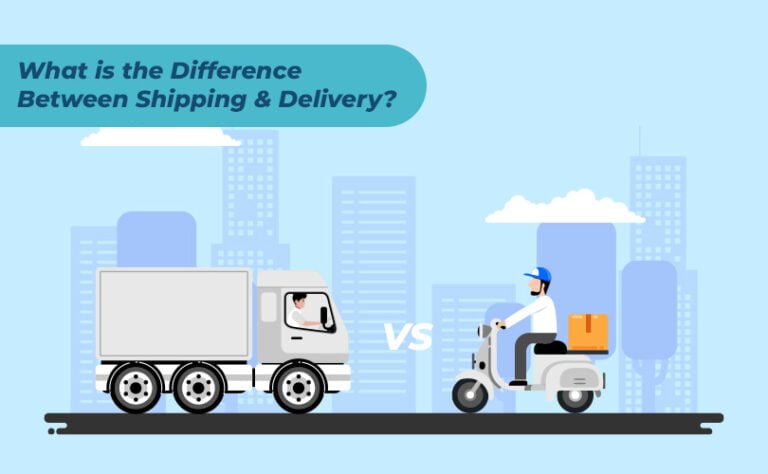

In today’s interconnected global economy, efficient warehousing and distribution are critical components of a smooth-running sup-ply chain.
However, the landscape of logistics is constantly evolving, presenting new challenges and complexities, particularly during times of supply chain strain.
Here are the key challenges faced by warehousing and distribution operations when grappling with supply chain strain, and explore strategies to address them.
• Demand Fluctuations: Supply chain strain often leads to un-predictable shifts in consumer demand, making accurate inventory management a daunting task.
• Stockouts vs Overstock: Balancing the risk of stockouts against the cost of excess inventory becomes increasingly challenging when supply chain disruptions occur.
• Dynamic Forecasting: Implementing dynamic forecasting models that account for real-time data and market trends can help mitigate the impact of supply chain strain on inventory management.
• Space Limitations: Warehousing facilities may face capacity constraints due to increased inventory levels or disruptions in transportation, leading to storage space shortages.
• Labor Shortages: Supply chain strain can exacerbate labor shortages, impacting warehouse operations such as picking, packing, and shipping.
• Optimizing Resources: Investing in automation and technology solutions, such as warehouse management systems (WMS) and robotics, can optimize resource allocation and improve operational efficiency despite capacity constraints.
• Delays and Bottlenecks: Transportation disruptions, including port congestion, driver shortages, and freight capacity constraints, can lead to delays in product deliveries and increased transit times.
• Last-Mile Challenges: The final leg of the delivery process, known as the last mile, presents unique challenges such as urban congestion, delivery scheduling, and customer expectations for fast and reliable service.
• Alternative Routes and Modal Shifts: Exploring alternative transportation routes and modal shifts, such as rail or intermodal transport, can help mitigate the impact of transportation disruptions on warehousing and distribution operations.
• End-to-End Visibility: Limited visibility across the supply chain can exacerbate the impact of supply chain strain on warehousing and distribution operations, making it difficult to anticipate and respond to disruptions.
• Collaborative Partnerships: Building collaborative relation-ships with suppliers, carriers, and logistics partners can facilitate information sharing and coordination, enabling proactive problem-solving and risk mitigation.
• Data Analytics and IoT: Leveraging data analytics and Internet of Things (IoT) technologies to track and monitor inventory in real-time can enhance supply chain visibility and enable proactive decision-making.
• Supply Chain Mapping: Conducting thorough supply chain mapping exercises to identify potential vulnerabilities and single points of failure can help mitigate risks and enhance resilience.
• Contingency Planning: Developing robust contingency plans and business continuity strategies can enable swift responses to supply chain disruptions, ensuring minimal disruption to warehousing and distribution operations.
• Scenario Planning: Scenario planning exercises that simulate various supply chain disruption scenarios can help organizations prepare for and mitigate the impact of supply chain strain on warehousing and distribution activities.
• Trade Policies and Tariffs: Changes in trade policies, tariffs, and customs regulations can introduce additional complexities and disruptions to warehousing and distribution operations, particularly for companies with international supply chains.
• Compliance Challenges: Ensuring compliance with evolving regulatory requirements, such as safety standards, product labeling, and environmental regulations, is crucial to avoid costly penalties and delays.
• Risk Assessment and Compliance Management: Conducting comprehensive risk assessments and implementing robust compliance management processes can help mitigate the impact of regulatory changes on warehousing and distribution activities.
• Expectation for Speed and Accuracy: In today’s fast-paced marketplace, customers expect swift order fulfillment and accurate deliveries, placing pressure on warehousing and distribution operations to meet stringent service levels.
• Personalization and Flexibility: Rising demand for personalized products and flexible delivery options further complicates warehousing and distribution processes, requiring agility and adaptability to meet diverse customer needs.
• Investment in Customer-Centric Technologies: Investing in customer-centric technologies, such as order management systems (OMS) and delivery tracking platforms, can enhance visibility and transparency throughout the order fulfillment process, improving customer satisfaction and loyalty.
• Carbon Emissions and Environmental Impact: Warehousing and distribution activities contribute to carbon emissions and environmental degradation, raising concerns about sustainability and corporate responsibility.
• Green Logistics Initiatives: Implementing green logistics initiatives, such as eco-friendly packaging, energy-efficient transportation, and warehouse automation, can reduce environmental footprint and enhance sustainability across the supply chain.
• Stakeholder Engagement: Engaging with stakeholders, including customers, suppliers, and local communities, to promote sustainable practices and transparency can foster trust and goodwill while addressing environmental concerns.
• Adoption of Emerging Technologies: Embracing emerging technologies such as artificial intelligence (AI), machine learning, and blockchain can revolutionize warehousing and distribution operations, enabling predictive analytics, autonomous vehicles, and smart inventory management.
• Integration of Systems and Platforms: Seamless integration of systems and platforms, including WMS, enterprise resource planning (ERP), and transportation management systems (TMS), is essential to optimize end-to-end supply chain processes and enhance operational efficiency.
• Continuous Innovation and Adaptation: Cultivating a culture of continuous innovation and adaptation is paramount to staying ahead in the ever-evolving landscape of warehousing and distribution, empowering organizations to leverage technology to drive competitive advantage and operational excellence.
Here are some specific measures that can be taken to tackle the warehousing and distribution challenges during periods of supply chain strain:
1. Dynamic Inventory Management:
• Implement dynamic inventory management practices that lever-age real-time data and predictive analytics to anticipate fluctuations in demand and adjust inventory levels accordingly.
• Establish safety stock levels for essential products to mitigate the risk of stockouts during supply chain disruptions.
• Utilize demand sensing technologies and collaborative forecasting with suppliers to improve accuracy in demand planning.
2. Capacity Optimization:
• Invest in warehouse optimization technologies such as auto-mated storage and retrieval systems (AS/RS) and vertical space utilization to maximize storage capacity.
• Implement cross-docking strategies to streamline the flow of goods and reduce inventory holding times.
• Utilize third-party logistics (3PL) providers and on-demand warehousing services to access additional storage space during peak periods or capacity constraints.
3. Transportation Efficiency:
• Diversify transportation modes and carriers to mitigate the risk of disruptions and bottlenecks in the transportation network.
• Implement route optimization software and vehicle tracking systems to improve delivery efficiency and reduce transit times.
• Collaborate with transportation partners to establish contingency plans and alternative routes in response to unforeseen disruptions.
4. Enhanced Supply Chain Visibility:
• Deploy advanced tracking and monitoring technologies such as RFID tags and GPS systems to gain real-time visibility into the movement of goods throughout the supply chain.
• Implement cloud-based supply chain management platforms that enable stakeholders to access and share relevant information seamlessly.
• Foster collaboration and information sharing among supply chain partners through the use of data-sharing agreements and integrated systems.
5. Risk Mitigation and Contingency Planning:
• Conduct risk assessments to identify potential vulnerabilities in the supply chain and develop contingency plans to mitigate the impact of disruptions.
• Establish alternative sourcing options and supplier relationships to diversify the supply base and reduce reliance on single sources of supply.
• Develop cross-functional crisis management teams to coordinate response efforts and ensure rapid decision-making during supply chain disruptions.
6. Adoption of Technology and Automation:
• Invest in advanced technologies such as robotics, autonomous vehicles, and warehouse management systems (WMS) to improve operational efficiency and accuracy.
• Leverage artificial intelligence (AI) and machine learning algorithms to optimize inventory replenishment, demand forecasting, and order fulfillment processes.
• Train employees on the use of technology and automation systems to enhance productivity and adaptability in the warehouse environment.
7. Continuous Improvement and Adaptation:
• Establish a culture of continuous improvement and innovation within the organization, encouraging employees to identify and implement process improvements.
• Conduct regular performance reviews and benchmarking exercises to identify areas for optimization and efficiency gains.
• Stay informed about emerging trends and technologies in ware-housing and distribution, and be prepared to adapt strategies accordingly to maintain competitiveness in the marketplace.
By implementing these measures, organizations can enhance the resilience and agility of their warehousing and distribution operations, enabling them to navigate supply chain strain more effectively and ensure continuity of service to customers.
Warehousing and distribution challenges in India and the UK can vary based on factors such as infrastructure, regulatory environment, market dynamics, and geographical considerations. Let’s examine the key challenges faced by each country:
1. Brexit Uncertainties:
• The UK’s departure from the European Union (EU) has introduced uncertainties and disruptions to cross-border trade, impacting warehousing and distribution operations with new customs procedures, tariffs, and regulatory requirements.
• Border delays, customs clearance issues, and changes in trade agreements pose challenges for supply chain logistics, particularly for companies with extensive EU trade ties.
2. Capacity Constraints and Land Availability:
• Limited availability of warehousing space, especially in urban areas and logistics hotspots such as the Midlands, puts pressure on capacity and drives up rental costs.
• Land constraints and planning regulations restrict the development of new warehousing facilities, exacerbating the shortage of available space.
3. Labor Market Dynamics:
• The UK logistics sector faces labor shortages, particularly in skilled roles such as forklift operators, warehouse managers, and drivers, which impact productivity and service levels.
• Concerns over recruitment and retention of EU workers post-Brexit have heightened labor market challenges for warehousing and distribution companies.
4. Sustainability and Environmental Regulations:
• Increasing focus on sustainability and environmental regulations in the UK, including carbon emissions targets and waste management regulations, place pressure on logistics companies to adopt greener practices and invest in eco-friendly technologies.
• Compliance with environmental standards and emissions reduction targets adds complexity and costs to warehousing and distribution operations.
5. E-commerce Growth and Customer Expectations:
• The rapid growth of e-commerce and changing consumer preferences for online shopping have increased demand for ware-housing and distribution services, putting strain on existing infrastructure and fulfillment capabilities.
• Heightened customer expectations for fast and reliable delivery, along with flexible fulfillment options such as same-day and next-day delivery, require logistics providers to adapt their operations to meet evolving demands.
In both India and the UK, addressing these challenges requires a multi-faceted approach involving investment in infrastructure, regulatory reforms, technology adoption, skill development, and collaboration among stakeholders.
By overcoming these challenges, warehousing and distribution operations can contribute to a more efficient and resilient supply chain, supporting economic growth and competitiveness in the global marketplace.
In the face of mounting challenges and disruptions, warehousing and distribution operations play a pivotal role in maintaining the resilience and agility of the supply chain.
By addressing key challenges such as inventory management, capacity constraints, transportation disruptions, and regulatory compliance, while embracing technological innovations and sustainability initiatives, organizations can navigate supply chain strain with confidence and emerge stronger and more resilient in the face of uncertainty.





